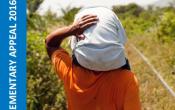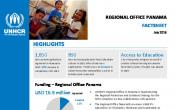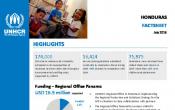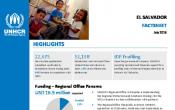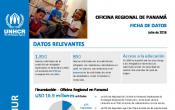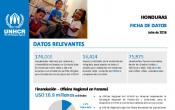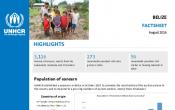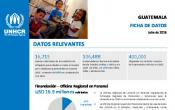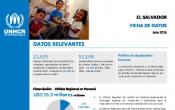Panama Regional Office
Operation: Panama Regional Office
Location
{"longitude":-80,"latitude":8,"zoom_level":0}
Latest update of camps and office locations 21 Nov 2016. By clicking on the icons on the map, additional information is displayed.
Key Figures
| 2017 planning figures | |
| 65% | of people of concern for whom disaggregated data will be available |
| 4,000 | children and adolescents with protection needs reached through the “Education in Emergencies” project |
| 1,000 | people of concern will receive legal assistance |
| 800 | individuals at heightened protection risk with imminent fear for their lives, due to direct threats, sexual assaults, persecution, forced recruitment and extreme intimidation, will be supported |
| 80 | events, workshops and seminars on law and policy, internal displacement, refugee law and child protection will be organized |
| 70 | partner and Government staff will be provided with general training on child protection and children’s rights |
| 2015 end-year results | |
| 156 | government status determination staff trained in El Salvador, Guatemala and Honduras |
| 86% | of people of concern registered on an individual basis in the region |
| 15 | survivors of SGBV received material and psychological assistance in the region |
| 899 | people of concern received residence permits in Panama and Nicaragua |
Latest Updates and Related Links
People of Concern
989%
Increase in
2015
2015
| 2015 | 214,190 |
| 2014 | 19,663 |
| 2013 | 19,152 |

[["Refugees",3259],["Refugee-like situation",15000],["Asylum-seekers",3225],["IDPs",174000],["Returned refugees",2],["Stateless",3],["Others of concern",18701]]
Loading ...
Budgets and Expenditure for Panama Regional Office
< Back
2015
{"categories":[2012,2013,2014,2015,2016,2017],"budget":[5.12996089,5.8548486,8.42523081,8.225381364,16.87826507,20.178410404],"expenditure":[3.74483435,4.03032947,4.45055113,4.39118839,null,null]}
{"categories":[2012,2013,2014,2015,2016,2017],"p1":[5.12996089,5.69669732,8.10063207,8.225381364,16.87826507,20.178410404],"p2":[null,0.15815128,0.32459874,null,null,null],"p3":[null,null,null,null,null,null],"p4":[null,null,null,null,null,null]}
{"categories":[2012,2013,2014,2015,2016,2017],"p1":[3.74483435,3.87217783,4.28218306,4.39118839,null,null],"p2":[null,0.15815164,0.16836807,null,null,null],"p3":[null,null,null,null,null,null],"p4":[null,null,null,null,null,null]}
Loading ...
CHOOSE A YEAR
- 2015
- 2016
- 2017
Working environment
The number of people fleeing from the Northern Triangle of Central America (NTCA) countries is increasing. By the end of 2015, the number of refugees and asylum-seekers with pending cases from NTCA in North and Central America countries reached more than 108,000 people, representing more than a five-fold increase in three years. This tendency is expected to continue for 2017.In Honduras, a Government study supported by UNHCR and the Joint IDP Profiling Service surveyed 20 municipalities and reported at least 174,000 internally displaced people due to the high level of violence and criminality between 2004 and 2014. During 2016 similar tendencies of increased internal displacement were presented. The existing profiling exercise and figures on internal displacement will be updated in 2017.
Key priorities
In 2017 the UNHCR operation will focus on strengthening the asylum space in the region, supporting the development of relevant existing frameworks and policies on asylum and internal displacement; UNHCR developed a Protection and Solutions Strategy (2016-2018) within the context of the 2014 Brazil declaration, with strategic objectives guiding the operation at regional level, addressing the protection needs of refugees and asylum-seekers; returnees with specific protection needs; and internally displaced people.In order to meet the most urgent needs of up to 570,000 people of concern, a Supplementary Appeal was presented in June 2016 as a follow-up to the Protection and Solutions Strategy launched in December 2015. The additional resources received had a crucial impact in the areas of child protection, community-based protection, protection networks and border monitoring, strengthening of reception centres, protection responses for cases at heightened risks, as well as the reinforcement of national human rights entities (ombudsperson offices) in the three Northern Triangle of Central American countries. Enhancement of local integration in refugee receiving countries remains a critical area of the 2017 financial requirements; in particular to strengthen in particular to strengthen livelihoods and urban refugee programming, as well as for the establishment of humanitarian alternative pathways.

